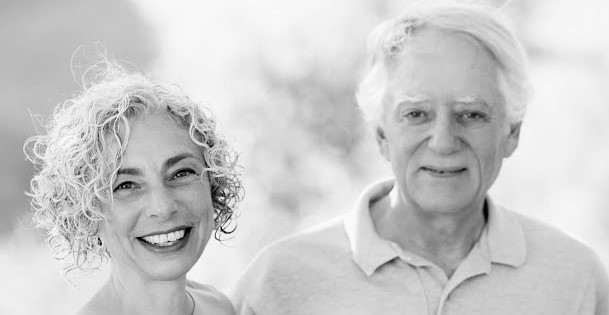LOCKSS founders Vicky Reich and David Rosenthal recall their early efforts to Keep Stuff Safe, and their motivation for the innovative digital preservation system
The foundation of LOCKSS in 1999 was conceived in an unlikely spot – when Vicky Reich and David Rosenthal were hiking the Cañada de Pala trail at Joseph D. Grant County Park in California, and came up with the idea for the necessary technology.

In simple terms LOCKSS was designed to provide open-source technologies and services for high-confidence, resilient, secure digital preservation – providing infrastructure for academic libraries to continue to take responsibility for content preservation, and to affordably own rather than rent electronic journals and books. Key to this was the concept that the technology should guard against a centralised organisation changing or altering the content.
University of Cambridge graduate David, who at the time was working at his third start-up company, recalls: “The very next day we pitched the idea to Michael Keller, the Stanford Librarian, and got permission to start the project. Michael told us: ‘Don't cost me any money, and don't get me in to trouble. Apart from that, do what you like.’ You can't ask better than that.” The name LOCKSS – standing for Lots of Copies Keeps Stuff Safe – also David’s brainchild, came about on another long-distance hike in California.
For her part, Vicky had worked in a series of libraries across the United States – initially as a reference librarian and then in acquisitions for journals and books at the National Agricultural Library and at Stanford. When Highwire Press was founded at Stanford, Vicky was one of a handful of people chosen to work on the project, working more closely with academic publishers from small scholarly societies. This background gave Vicky a deep insight into the world of academic librarianship, which was crucial to the development and success of LOCKSS alongside its technical prowess.
She says: “We were a meeting of minds in California, but I grew up in New York and David grew up in London and educated in Britain. So yes, we are an interesting couple sometimes – British sensibilities versus New York sensibilities!”
Indeed, David’s time in the hallowed space of Cambridge’s Trinity College was one of the inspirations behind LOCKSS: “My rooms at Trinity were above the library, where century-old journals were sitting on the stacks for us to read. As an engineer I knew that keeping digital data for a century was going to be an extraordinarily difficult problem.”
A vision of continuity
Vicky describes the vision behind LOCKSS: “It was founded out of a desire to keep the tenets of academic librarianship. The LOCKSS technology implemented the purchase model, allowing libraries to use their rented access to the publisher's copy to create a copy with which they could provide their readers access to the content in the event that, for any reason, the publisher's copy was unavailable.” The technology used a peer-to-peer, decentralised network of small systems at libraries to make the extreme reliability needed for preservation affordable.
CLOCKSS, or Controlled LOCKSS, came about after a conversation between Vicky, David and Karen Hunter of Elsevier. A shared dark archive that runs on LOCKSS technology. CLOCKSS's content is now hosted on 12 servers around the world, at leading academic libraries, with robust infrastructure and security.
David continues: “Smaller academic publishers were happy with libraries using the purchase model for their electronic content, but the large publishers drove a switch to the rental model. We invented the idea of using a closed, centralised network to persuade publishers of all types to allow their content to be preserved in systems outside their exclusive control but with their involvement”.
Vicky adds: ‘It was absolutely the big publishers that were driving this forward, I have the utmost respect for them. The publishing community was on something of a high from the foundation of CrossRef, and there was a real sense of ‘Gosh, look at what we can do. We can do some real good here’ – and they did!”
Independence is key
If there was going to be a community-run preservation organisation, says Vicky, CLOCKSS was the best bet for all concerned: “Whereas Portico is owned by a single entity, LOCKSS is library-based."
“CLOCKSS moved forward because the large publishers were willing to lead. An early achievement was to bring on board an extremely strong and engaged board of directors, with Gordon Tibbitts and Michael Keller as Co-chairs. The library node model gave CLOCKSS access to new markets such as Australia and Japan. They were exciting times.”
In 2016, the LOCKSS Program was formally integrated into Stanford Libraries Digital Library Systems and Services group, at which time Vicky and David stepped away from active management and handed over responsibility to Nicholas Taylor. The program has clearly stood the test of time; 25 years on more than 9,000 e-journals from over 500 publishers are now committed to the LOCKSS initiative, along with these and dissertations, US government documents, newspapers, photograph collections, and audio-visual collections.
Since their retirement, the couple have spent time travelling, blogging – and spending time with their three grandchildren, who live close by in California. “We end up doing whatever the kids are interested in,” Vicky laughs. This summer they are planning a trip to the UK with the rest of the family, where they will visit David’s oldest friends in Cambridge – one he has known since the age of 11, and the other his Trinity College roommate.
